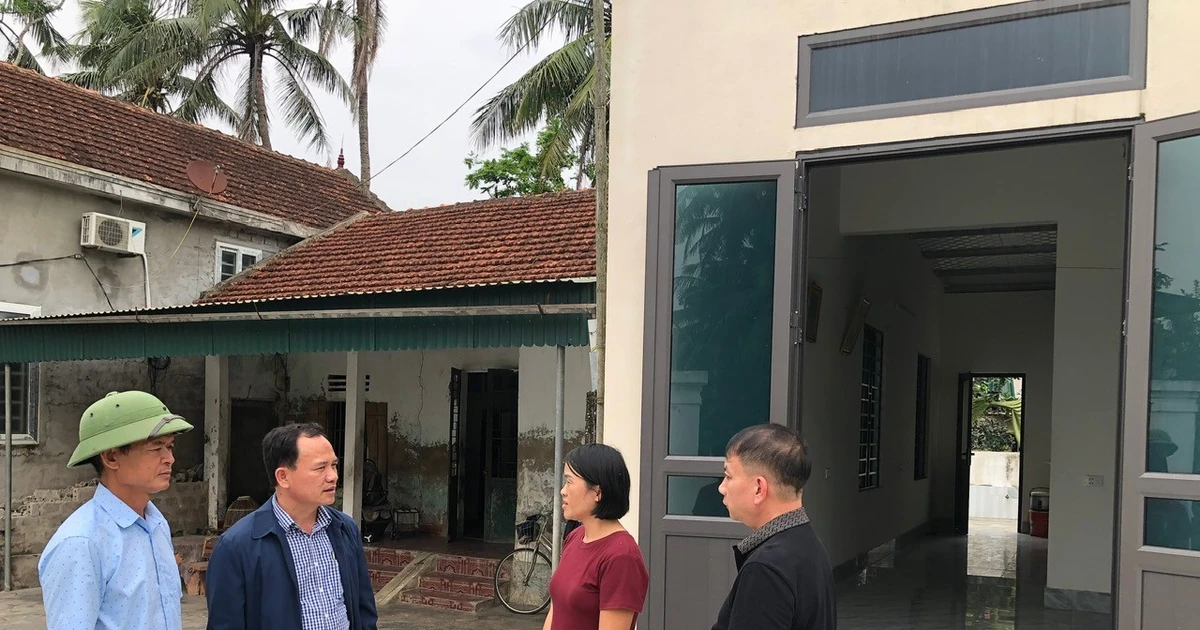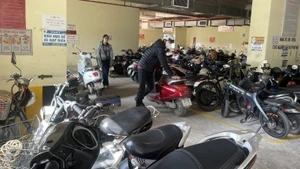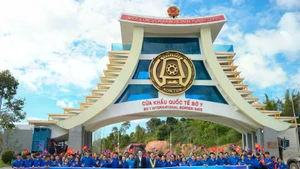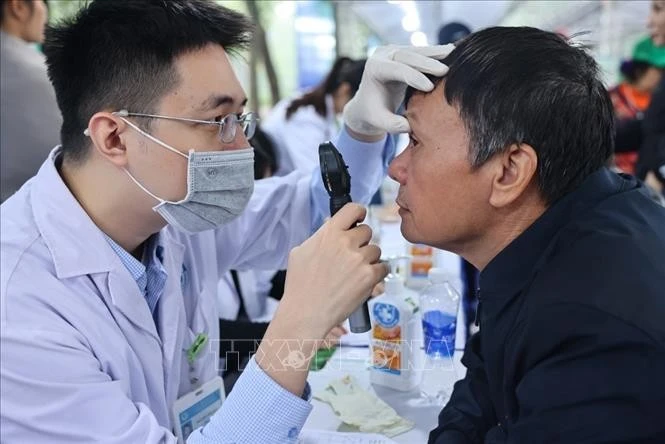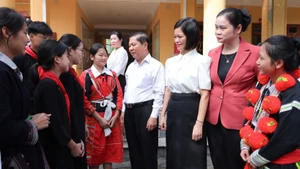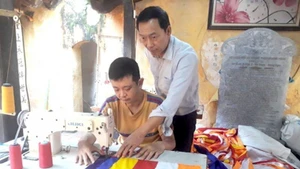Nghe An has the fourth-largest natural area and the tenth-largest population in the country. The province currently has more than 3.4 million people, of whom rural residents account for more than 82%.
The National Target Programme on Sustainable Poverty Reduction for the 2021-2025 period has received close attention and direction from the Provincial Party Committee, the Provincial People’s Committee, the Provincial People’s Council, the Viet Nam Fatherland Front, as well as strong support and active participation from all social groups. Awareness among Party committees, authorities and local people has improved significantly. The goal of poverty reduction has become an important task and indicator in the leadership, direction and governance of Party committees and local authorities at all levels. People’s Committees at all levels and relevant departments and sectors have implemented the programme decisively and synchronously; focused on drafting and submitting documents to competent authorities or issuing documents within their authority to create the basis for implementing the programme in accordance with regulations. Governance has been timely and flexible, based on the real situation of each locality.
To implement the Programme, the Provincial People’s Committee submitted to the Provincial People’s Council for issuance 16 Resolutions; and issued within its own authority 38 Decisions, 13 Plans and other guiding documents, ensuring timely, complete and synchronised direction. To date, the province has established a unified framework of governance documents from provincial to grassroots levels, serving as an important legal basis for localities and units to proactively implement the Programme effectively. Under the two-tier local government model, communes and wards have established and strengthened the Steering Committees for National Target Programmes chaired by the People’s Committee chairperson to organise implementation of the Programmes in their areas.
Pham Thanh Vinh, Vice Chairman of the Provincial People’s Committee, said the Provincial People’s Committee had assigned specific duties and responsibilities to each sector in charge of programme components, sub-projects and projects, avoiding overlap and enhancing effectiveness through integrated implementation and synergistic impacts of programmes operating in the same locality. Steering Committees at all levels have led and implemented the National Target Programme on Sustainable Poverty Reduction for the 2021-2025 period synchronously, issuing guiding documents, expediting progress, allocating capital plans and organising disbursement. Local governments and relevant units maintain regular coordination mechanisms, promptly addressing difficulties and problems or reporting matters beyond their authority. Communication, inspection and supervision have been strengthened, helping promptly correct shortcomings, improve public awareness of their rights and responsibilities in the review process; and encourage transparent, honest and timely public oversight.
During the 2021-2025 period, the province has strictly implemented the review of poor and near-poor households in accordance with regulations. Each year, the Provincial People’s Committee issues a plan and organises training for Steering Committees at all levels, ensuring synchronised and standardised review procedures. At the end of 2021, the province had 66,673 poor households (7.8%) and 56,289 near-poor households (6.59%), with mountainous areas accounting for 17.24%. By the end of 2024, the number of poor households had fallen to 36,703 (4.16%) and near-poor households to 47,838 (5.42%), with mountainous areas reduced to 10.35%. Compared with 2021, the poverty rate of the province fell by 3.64% (an average of 1.21% per year), and the rate in mountainous areas fell by 6.89% (an average of 2.29% per year), both meeting their targets. It is estimated that by the end of 2025, the poverty rate of the province will fall to 3.13%, and that in mountainous areas to 8.66%, equivalent to reductions of 4.64% and 8.58% respectively compared with the starting period, averaging 1.16% and 2.15% per year, meeting the set goals.

Results of programme projects and sub-projects—such as investment in socio-economic infrastructure in poor districts; diversification of livelihoods; development of poverty-reduction models; support for production; nutritional improvement; development of vocational education and sustainable employment; and housing support for poor and near-poor households—have all shown positive outcomes.
The implementation of 267 crop and livestock production models has created jobs, livelihoods and incomes for more than 14,000 poor, near-poor and newly out-of-poverty households, contributing to economic growth and sustainable poverty reduction. The project supporting capacity building for agricultural, forestry, fisheries and salt-production activities; promoting value-chain-linked production; and applying high technology has renewed production methods, increased incomes and aligned with local production restructuring plans and commodity-oriented development. This has improved productivity, quality and production efficiency, developed potential local products and increased added value for producers, helping households escape poverty sustainably. Meanwhile, essential infrastructure projects have been invested in and have proved effective, meeting socio-economic development needs, serving daily life and production, facilitating goods circulation, supporting socio-economic infrastructure and improving living conditions for poor and near-poor households.
“Nutrition improvement” activities have helped improve nutritional status and reduce stunting, provide healthcare and enhance physical well-being for tens of thousands of children from poor, near-poor and newly out-of-poverty households; 40 training classes have been organised to provide technical guidance on community nutrition activities for 3,216 health workers at commune, ward, village, hamlet and school levels.
The Provincial People’s Committee has directed the full and timely implementation of poverty-reduction policies, support for poor and near-poor people, including more than 2.18 million beneficiaries in poor, near-poor and ethnic minority households and residents in extremely difficult areas receiving health insurance cards; 177,818 poor students receiving tuition exemptions and reductions; 210,917 poor households and 57,082 social-protection households receiving electricity subsidies; and more than 1,000 poor people, policy beneficiaries and vulnerable individuals receiving access to legal aid services…
Over five years (2021 to July 2025), preferential credit has been provided to 35,763 poor households, 64,755 near-poor households and 39,314 newly out-of-poverty households to fund production and business, support overseas labour, pay for children’s education, repair or build new housing, buy social housing, and build clean-water and sanitation facilities to improve living standards.
The movement “For the Poor – leaving no one behind” has been widely launched, linked with effective poverty-reduction models and exemplary stories of those overcoming hardship, creating strong community resonance. The project supporting poor and near-poor households to build or repair houses requires a minimum usable area of 30m², compliance with the “three solid” standard (solid foundation, solid frame and walls, solid roof), and a lifespan of at least 20 years. This has helped many households in mountainous areas obtain safe and durable housing, strengthening resilience to natural disasters and improving living conditions. A total of 6,152 houses have been completed (3,528 newly built; 2,642 repaired). Nguyen Thi Hue of Nha Nghi hamlet, Duc Chau commune, shared that in the final years of her mother-in-law Nguyen Thi Van’s life, she was happy to live in a new home. Both elderly and chronically ill, they had lived for years in a dilapidated house. With support of 50 million VND to build a new house, the children borrowed from relatives and credit funds to raise more than 100 million VND to build a proper home.
Nghe An has also actively mobilised socialised resources for poverty reduction, helping many households foster self-reliance, reduce dependence on state support and rise out of poverty, spreading positive influence across communities.
During the 2021-2025 period, poverty-reduction efforts in the province have achieved many positive results, with most indicators meeting or exceeding targets. The poverty rate, especially in mountainous and ethnic minority areas, has decreased significantly; essential infrastructure in difficult areas continues to be invested in; many livelihood models have been implemented effectively; and vocational training and job creation have received strong attention. However, poverty reduction has not yet been truly sustainable. Extreme weather, natural disasters and large-scale epidemics have caused serious damage to livelihoods and production, particularly affecting poor and near-poor households, as well as newly out-of-poverty households vulnerable to falling back into poverty. The large geographical area with complex terrain, a high proportion of ethnic minority households living in remote and extremely difficult areas, low socio-economic conditions and limited access to services makes it difficult to generate stable livelihoods for sustainable poverty reduction. A segment of the population still depends on state support; traditional farming practices remain largely subsistence-based and unstable. Many poor and near-poor individuals are elderly, disabled, lack working capacity or live in remote areas, making it difficult to select appropriate beneficiaries and support content for projects.
In the coming period, Nghe An province will focus on implementing key solutions to accelerate effective implementation of the National Target Programme on Sustainable Poverty Reduction for the 2021-2025 period, promptly addressing difficulties and bottlenecks, particularly under the two-tier local government model.
